It’s barely 10 am but the low-hanging sun is already hot on our faces; I’m glad I’ve got sun-block on. Gusts push against us as we hike up the ridge to the summit of Bluff Knoll, or Bular Mial, 1098 mts above sea-level. It’s suddenly chilly, I should’ve worn an extra layer…
Alert. Alive. Present. And puffed!
Catching our breath, we gaze eyes-wide over the verdant Stirling Range National Park, far into the distance, over endless golden fields.
Panoramic Vision
According to theory, our vigilant ancestors would scan horizons, expanding their peripheral vision to detect threats. If no danger loomed and action wasn’t urgent, stress levels would decrease, bringing about calm.
Today, we can tap into this tranquillity as we gaze at wide expanses and connect to our primal roots.
We feel small in the presence of vastness, satisfying a need to be a part of something bigger than ourselves, our self-focus reduced, and our inherent connection to nature awakened.
The 360-degree view from Bluff Knoll is AWEsome!
A Change of Perspective
“In order to understand ourselves, others, and the world around us, we need to be able to change and adapt our perspectives.” Albert Einstein
Although Einstein isn’t referring to a physical (point of) view, sometimes a change of outlook can be instrumental to a shift in thinking.
And our height from the ground adjusts our perspective.
Stay with me…. it’s a (science + math) thing.
If we’re standing on the beach, and of average height, the horizon is about 4.5 kms away, but as we climb higher, say up a mountain, the horizon moves further away (here’s the formula for geometry lovers).
So perhaps a mountain vista could be just what’s needed to overcome mental blocks, get inspired and see things from a different angle. Why not?
Moi? Not Much of a Climber
I do love the promise of a good view - enough to command my legs up the side of a mountain even though my body is nagging “Remind me why we’re doing this?”
To get to the top.
To experience the journey.
For the challenge.
For the snack at the top? And the coffee when we get back down!
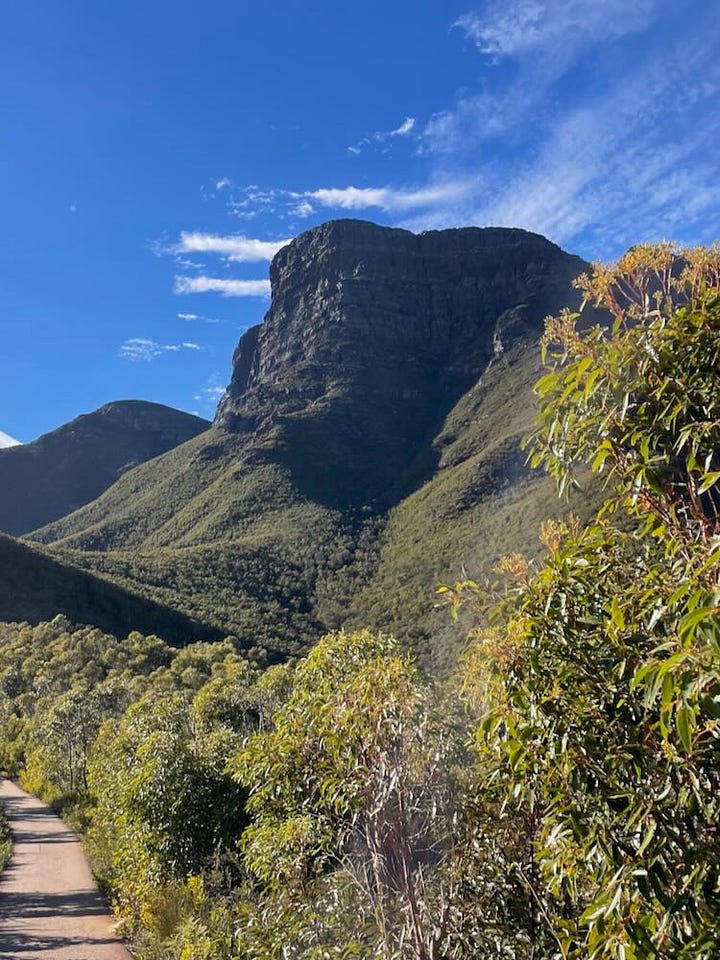
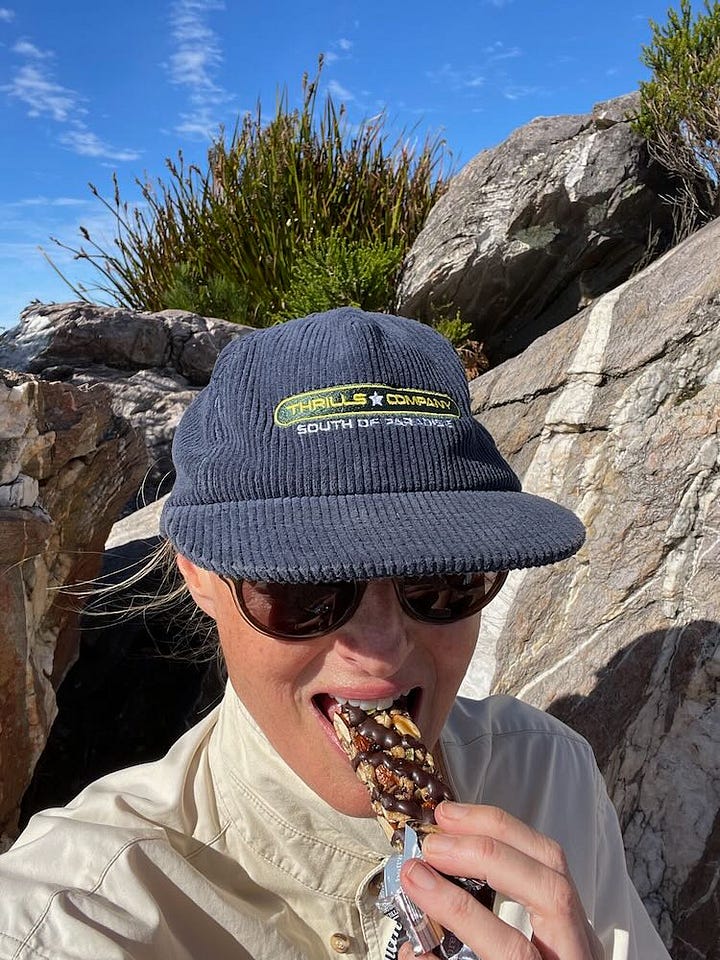
Glutes, hammies and calves activated to the max, elevate me over the next step.
My mind objects just a little bit, I know I’ll love it once it’s done - and that’s the challenge, to actually lean in and enjoy le moment! Oui, Oui!
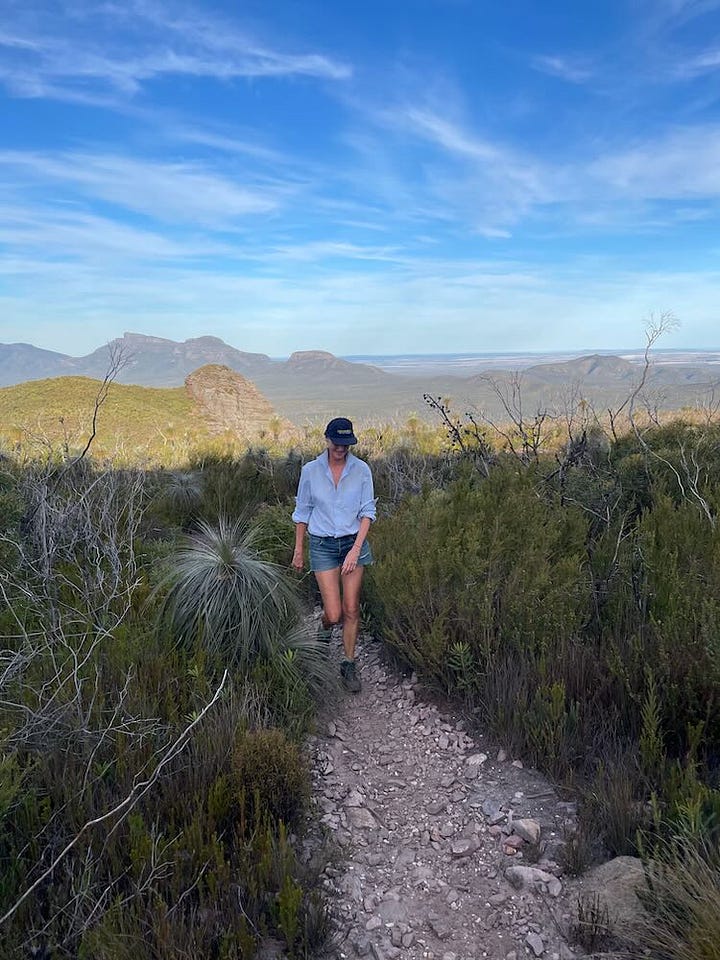
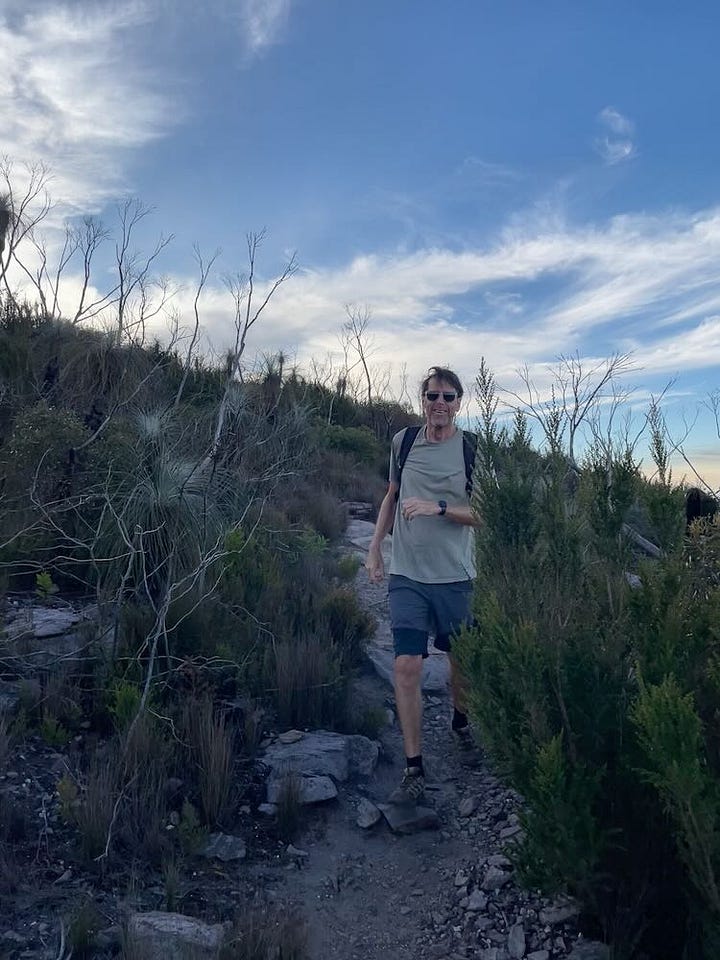
Steps in Rhythm
Eyes focused on the path ahead - I marvel at how the body and mind gather intel - terrain, inclination, temperature, energy available, and obstacles, coordinating all our moving parts to take the next step.
Recent research at The University of Sydney has found that our vision changes in rhythm with our walking!
Our brain senses our environment in a strobe-like way, vision rhythmically coordinated with our steps, taking regular visual samples before joining them together to create our seamless experience.
As my brain works on the visual montage, I catch myself saying “I think I can, I think I can” from ‘The Little Engine That Could’ - it’s bizarre where the mind goes for motivation.
My partner Tom climbs seemingly with no effort. Meanwhile, I huff and puff (hello cardio) and get distracted by wildflowers, and birdsong, or stop for a social chat with someone I encounter …. Do you know we’re more social when we’re walking in nature?

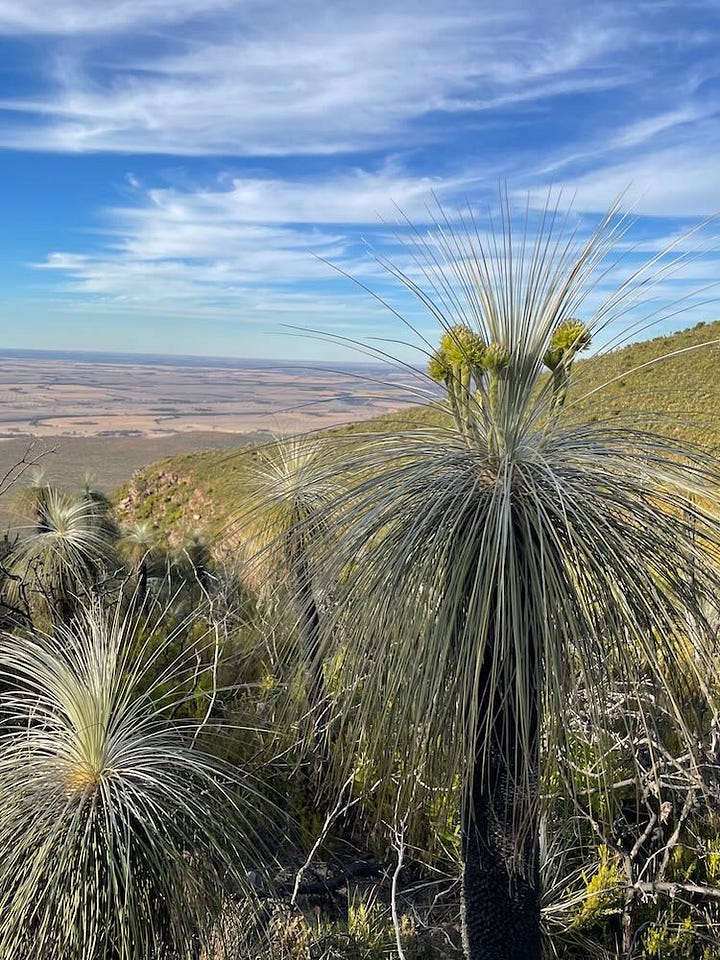
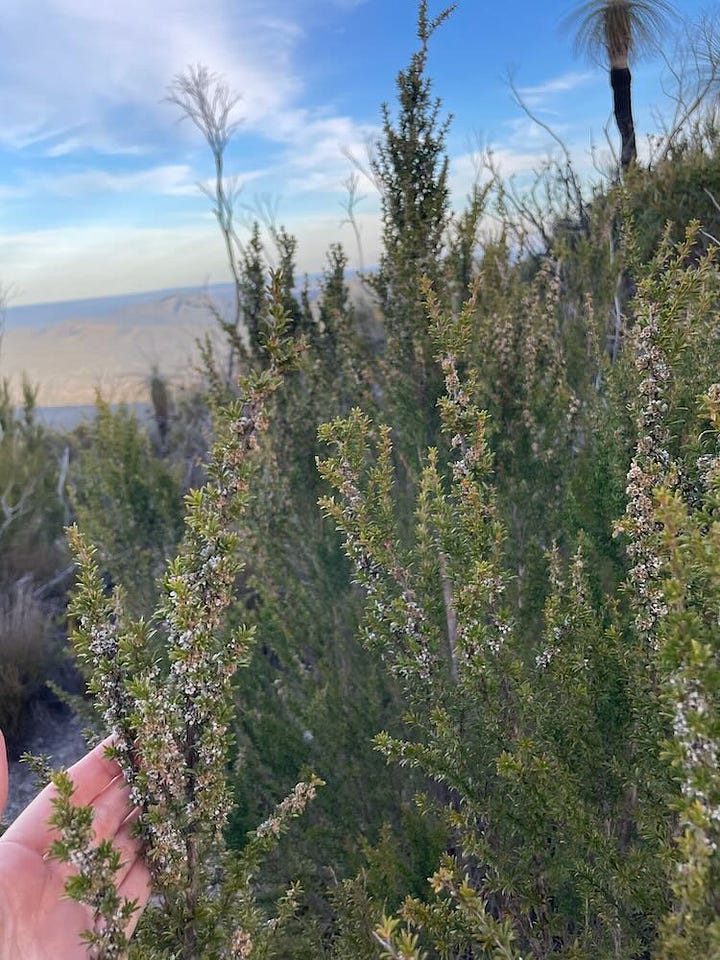

Mindful Hiking
It’s a thing, of course, it is.
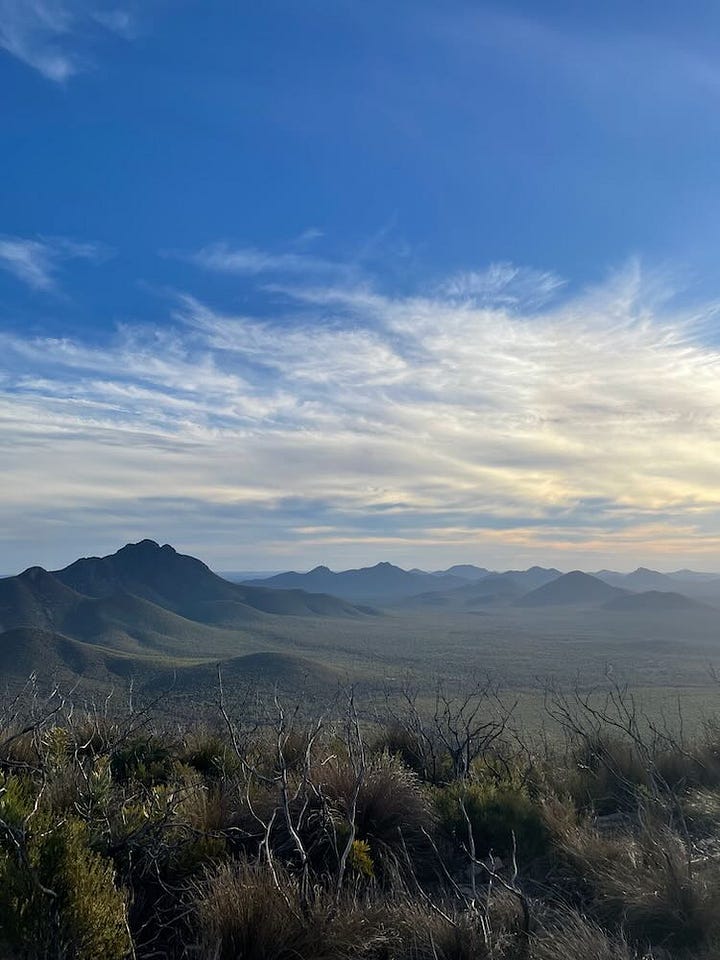
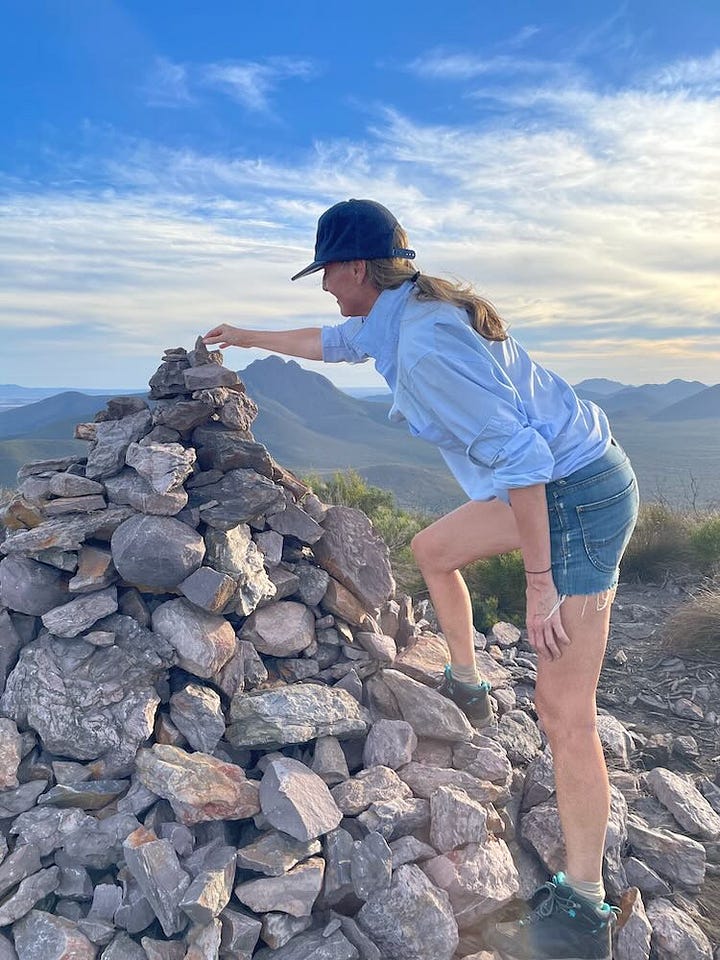
Mindful hiking is about slowing down our pace and paying attention to what’s going on in the present moment. Noticing what we see and hear, the scents around us, how our body feels, the rhythm of our breath and our heartbeat.
Focusing helps quieten the mind. A practice to shift out of our analytical thinking, to connect with our inner-self and the beauty that surrounds us.
Fortunately, we don’t have to climb a mountain, the solution can be as simple as taking a stroll in your local park or around your neighbourhood.
3 Good Reasons to Walk for Brain Health
Sharper Thinking - Regular walks enhance memory, focus, and problem-solving skills.
Brain Protection - Walking lowers the risk of cognitive decline, protecting against conditions like Dementia and Alzheimer's.
Sparks Creativity - Slip on your sneaks to fuel innovation and fresh ideas; research shows that creativity surges while walking compared to sitting.
Too easy!
Where will your next walk take you? I’d love to hear!!!
PS. Little Things - Travel Tips for the Stirling Range National Park
How to Get There?
The Stirling Range NP is about a 4.5 hour drive from Perth.
Where to Stay
Mt. Trio Bush Camp & Caravan Park - 25 minute drive to Bluff Knoll. We camped here, it’s situated behind a farm, framed by flowering gums and lovely bird-chatter, with plenty of room and view of the mountains. The facilities were clean with hot showers.
Stirling Range Retreat - 10 minute drive to Bluff Knoll. Camping, caravan park and chalets.
Both accomodations offer guided walks, check out their sites for more info.
Alternatively, you can stay in Albany, just 1 hr drive away, or Denmark 1.5 hr away.
Stirling Range National Park Entry Fee
$17 per vehicle, or you can purchase a Park Pass for multiple entries into most National Parks in WA. Make sure you put your printed ticket onto your dashboard.
Hiking Bluff Knoll
Signage indicates the hike time is 3-4 hour return, with a total distance of 6.8 kms.
We started from the car park at 8:30 am and it took us a total of just over 3 hours, including some time spent at the top. But it’s steep, so it’ll depend on your pace and level of fitness. Remember, it’s not a race.
The only toilets are located by the car park.
The path has a lot of steps; we saw several families with kids but it’d be quite a hike for their little legs.
It’s windy at the top and there are no railings; be careful and don’t stand close to the edge.
What to Take
Water
Sun protection - hat, sunglasses, sunscreen
Camera
Hiking boots or shoes
An extra layer to put on as you reach the summit
Hiking Poles, optional
Best Time to Hike Bluff Knoll
Autumn (March – May) or Spring (September – November).
Make sure you check the weather for rain and cloud coverage the night before. The ridge is very exposed at the top and you certainly wouldn’t want to climb in the rain. Sunrise viewing is quite popular.
We were lucky, it was a splendid April day with fab visibility, mid-high 20 degrees. If you decide to hike in the afternoon, make sure you give yourself enough time for the descent as you wouldn’t want to do it in the dark.
Hope this is helpful and might inspire you to discover this beautiful part of WA.
Baci xx

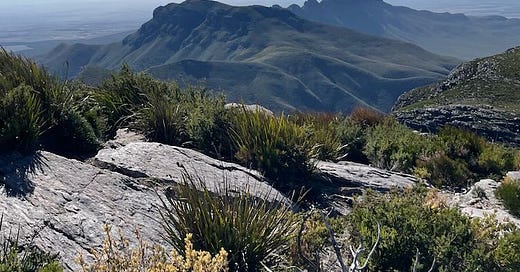




I didn’t see it coming. Philosophy, maths, physiology embodied in a delightful travel piece. Deeply enjoyable. Merci a vous.